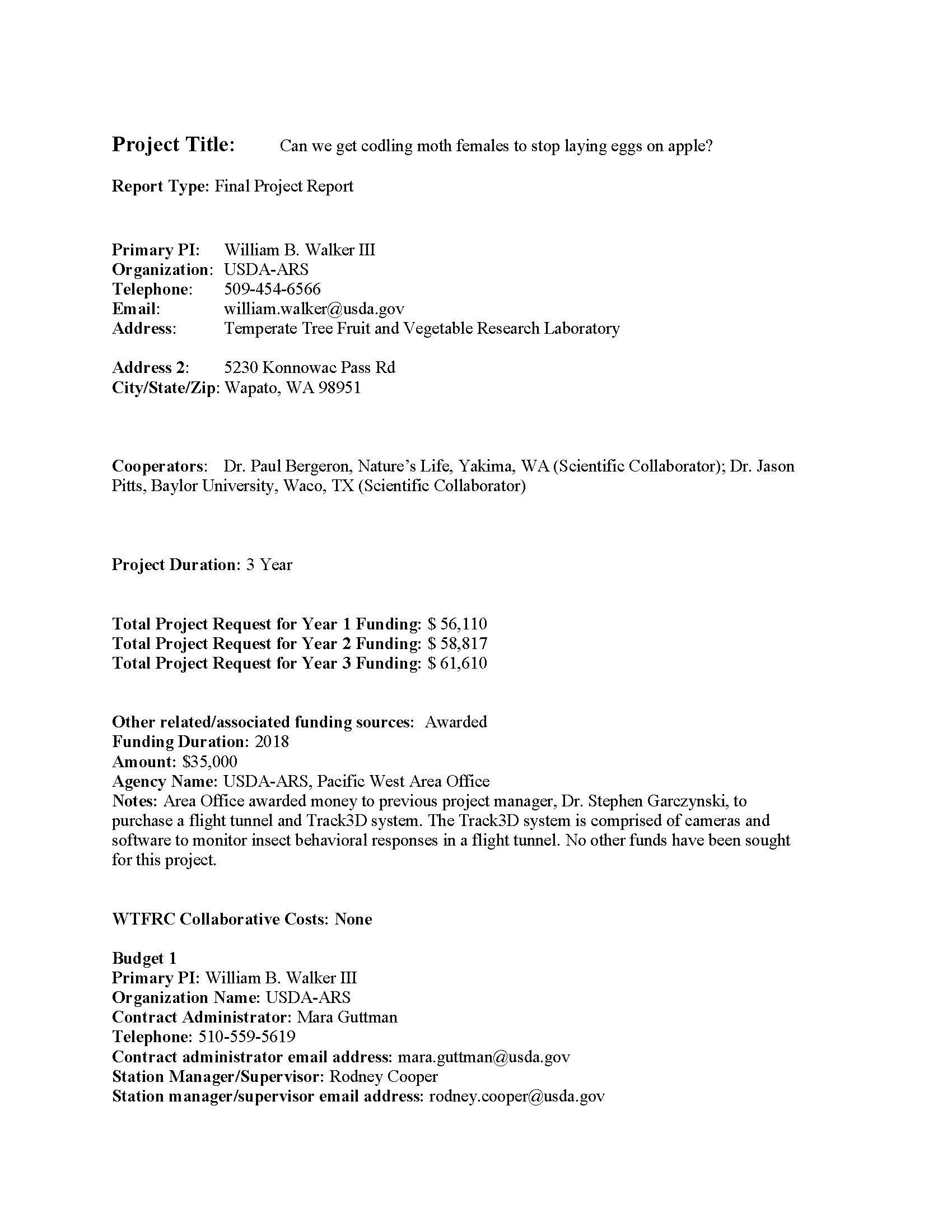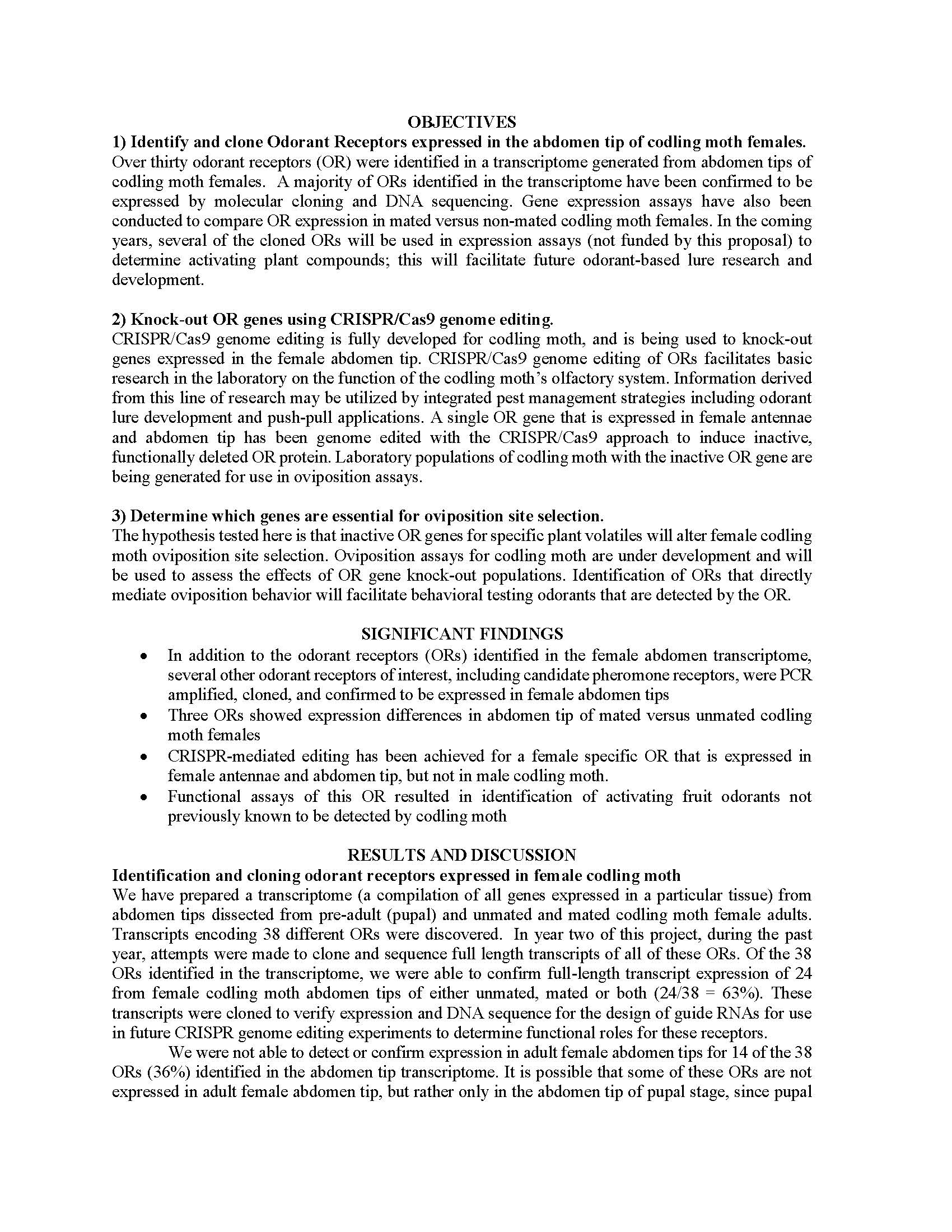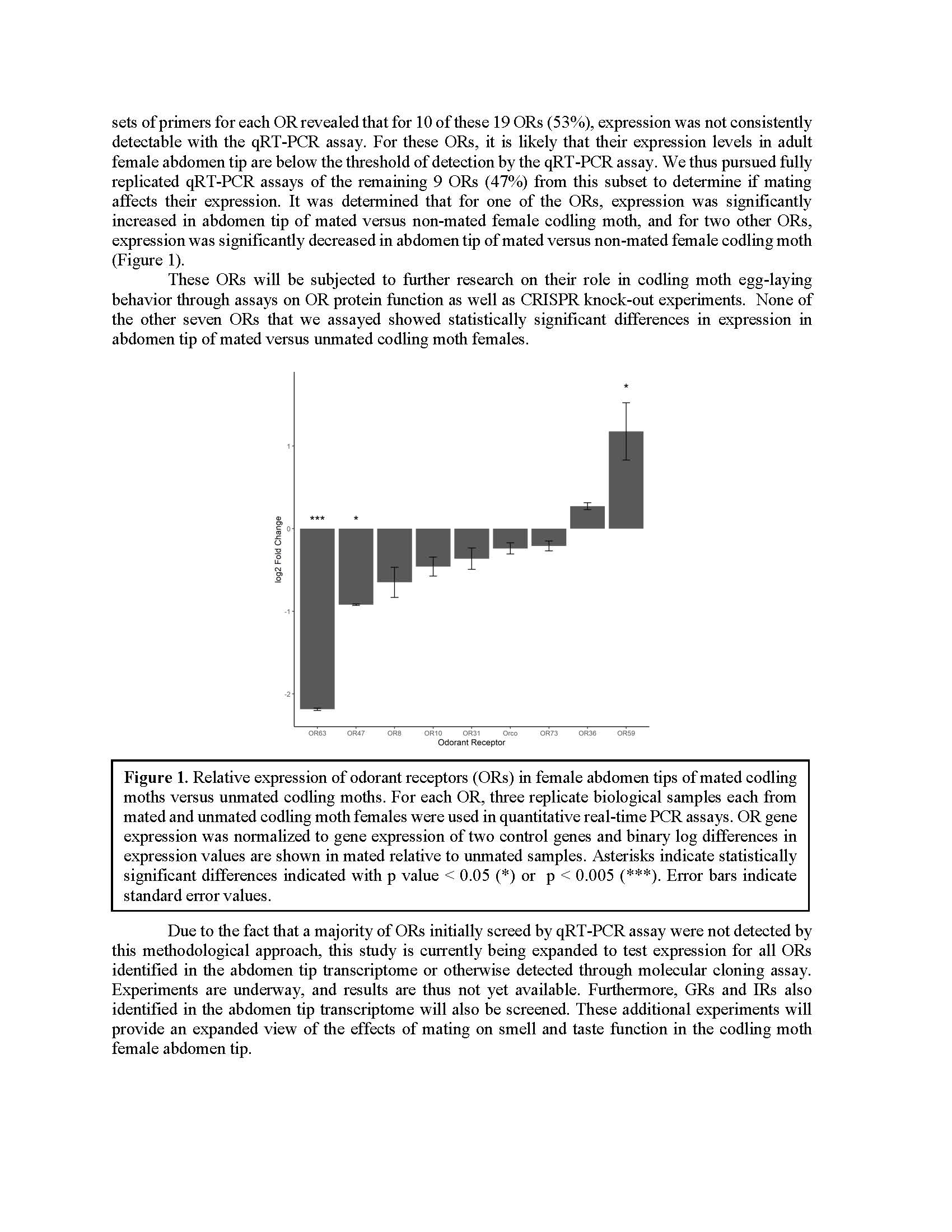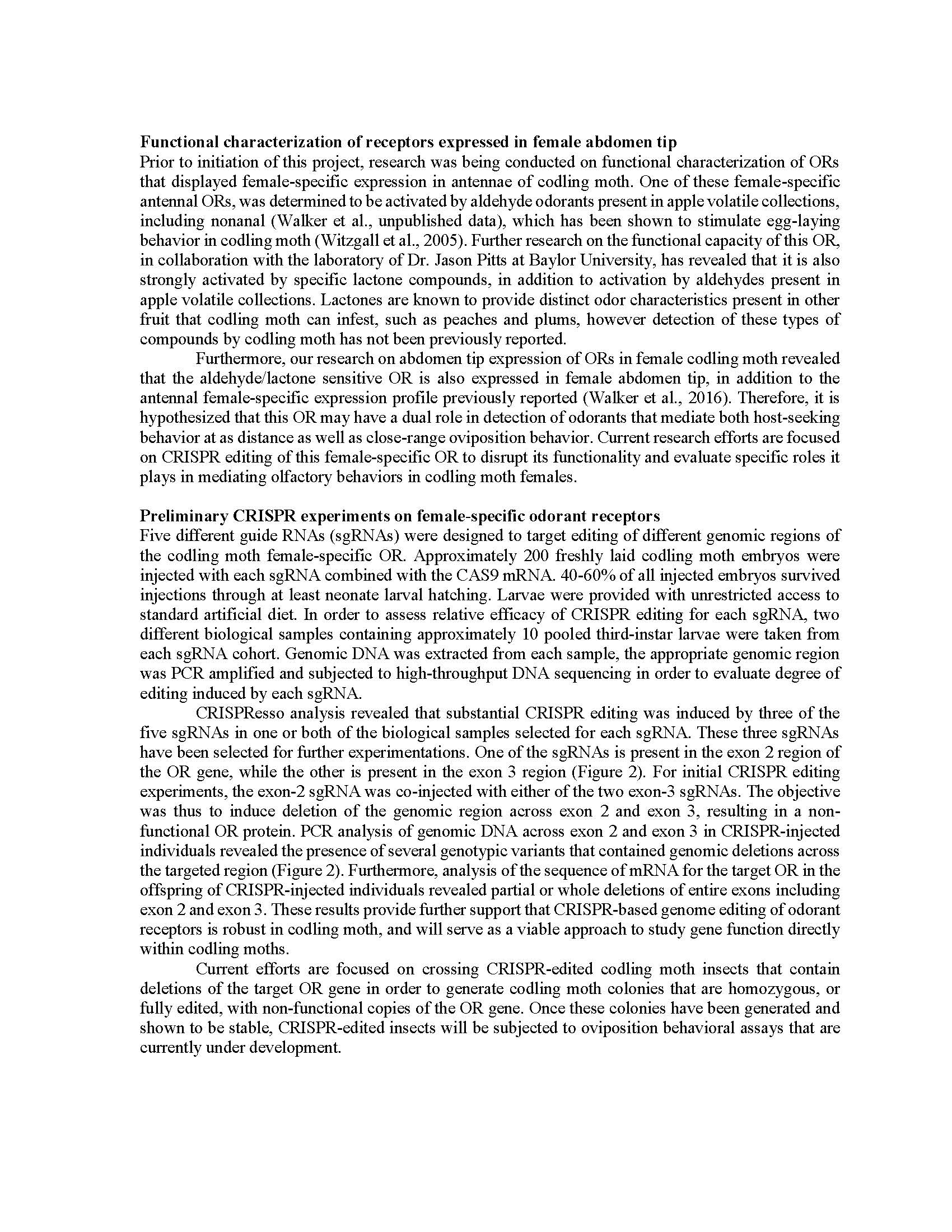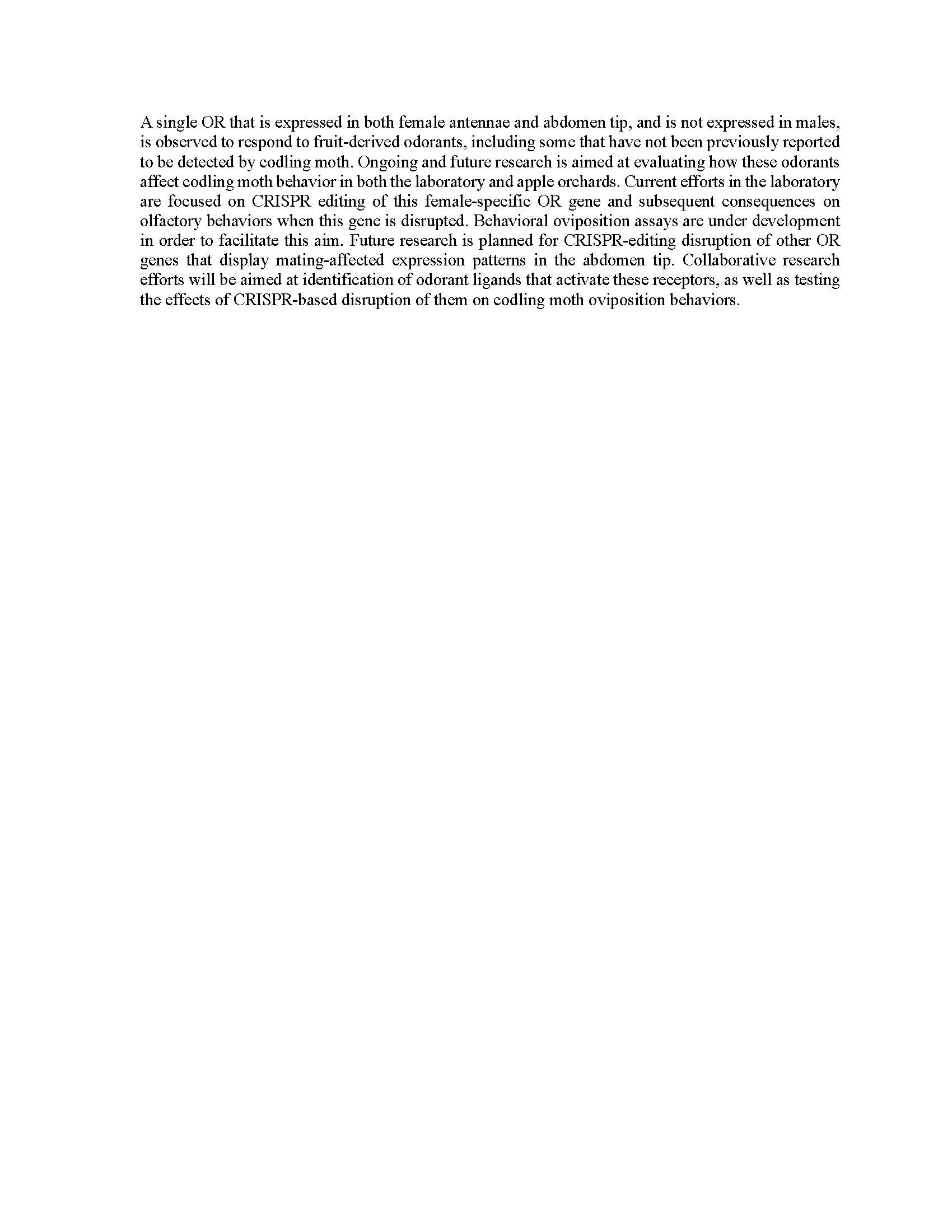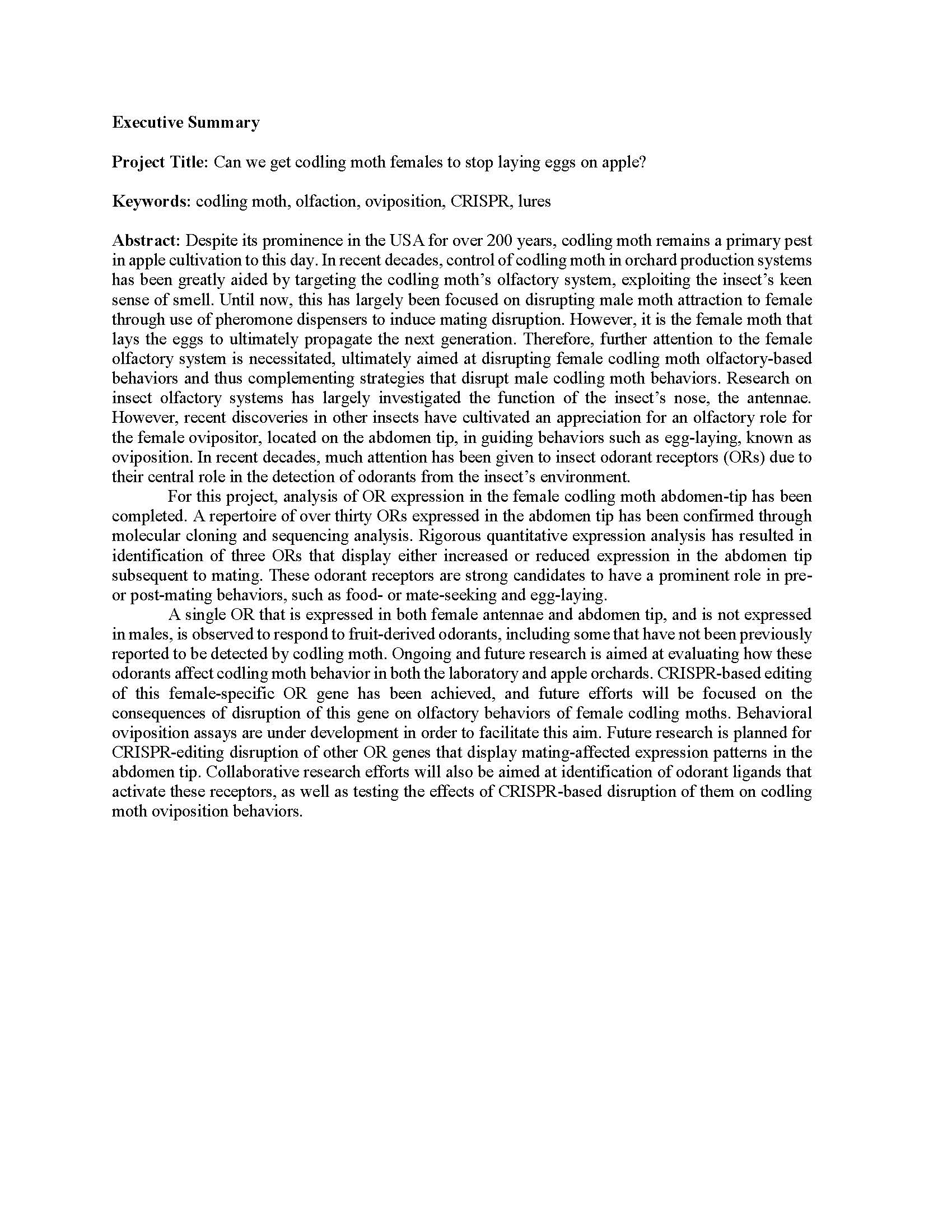Can we get codling moth females to stop laying eggs on apple?
Author: William B. Walker III
Published: 2023
Summary: Despite its prominence in the USA for over 200 years, codling moth remains a primary pest in apple cultivation to this day. In recent decades, control of codling moth in orchard production systems has been greatly aided by targeting the codling moth’s olfactory system, exploiting the insect’s keen sense of smell. Until now, this has largely been focused on disrupting male moth attraction to female through use of pheromone dispensers to induce mating disruption. However, it is the female moth that lays the eggs to ultimately propagate the next generation. Therefore, further attention to the female olfactory system is necessitated, ultimately aimed at disrupting female codling moth olfactory-based behaviors and thus complementing strategies that disrupt male codling moth behaviors. Research on insect olfactory systems has largely investigated the function of the insect’s nose, the antennae. However, recent discoveries in other insects have cultivated an appreciation for an olfactory role for the female ovipositor, located on the abdomen tip, in guiding behaviors such as egg-laying, known as oviposition. In recent decades, much attention has been given to insect odorant receptors (ORs) due to their central role in the detection of odorants from the insect’s environment. For this project, analysis of OR expression in the female codling moth abdomen-tip has been completed. A repertoire of over thirty ORs expressed in the abdomen tip has been confirmed through molecular cloning and sequencing analysis. Rigorous quantitative expression analysis has resulted in identification of three ORs that display either increased or reduced expression in the abdomen tip subsequent to mating. These odorant receptors are strong candidates to have a prominent role in pre- or post-mating behaviors, such as food- or mate-seeking and egg-laying. A single OR that is expressed in both female antennae and abdomen tip, and is not expressed in males, is observed to respond to fruit-derived odorants, including some that have not been previously reported to be detected by codling moth. Ongoing and future research is aimed at evaluating how these odorants affect codling moth behavior in both the laboratory and apple orchards. CRISPR-based editing of this female-specific OR gene has been achieved, and future efforts will be focused on the consequences of disruption of this gene on olfactory behaviors of female codling moths. Behavioral oviposition assays are under development in order to facilitate this aim. Future research is planned for CRISPR-editing disruption of other OR genes that display mating-affected expression patterns in the abdomen tip. Collaborative research efforts will also be aimed at identification of odorant ligands that activate these receptors, as well as testing the effects of CRISPR-based disruption of them on codling moth oviposition behaviors.
Keywords:

